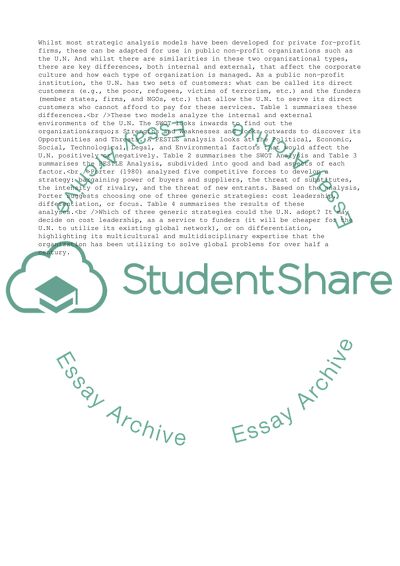Cite this document
(Four Models of the Strategic Management Analysis for Management Reform Essay Example | Topics and Well Written Essays - 2250 words, n.d.)
Four Models of the Strategic Management Analysis for Management Reform Essay Example | Topics and Well Written Essays - 2250 words. https://studentshare.org/management/1737230-united-nations-a-strategic-management-analysis-using-strategic-management-models
Four Models of the Strategic Management Analysis for Management Reform Essay Example | Topics and Well Written Essays - 2250 words. https://studentshare.org/management/1737230-united-nations-a-strategic-management-analysis-using-strategic-management-models
(Four Models of the Strategic Management Analysis for Management Reform Essay Example | Topics and Well Written Essays - 2250 Words)
Four Models of the Strategic Management Analysis for Management Reform Essay Example | Topics and Well Written Essays - 2250 Words. https://studentshare.org/management/1737230-united-nations-a-strategic-management-analysis-using-strategic-management-models.
Four Models of the Strategic Management Analysis for Management Reform Essay Example | Topics and Well Written Essays - 2250 Words. https://studentshare.org/management/1737230-united-nations-a-strategic-management-analysis-using-strategic-management-models.
“Four Models of the Strategic Management Analysis for Management Reform Essay Example | Topics and Well Written Essays - 2250 Words”. https://studentshare.org/management/1737230-united-nations-a-strategic-management-analysis-using-strategic-management-models.


